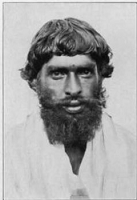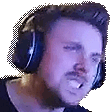6




















| Thumbs Up |
| Received: 29,829 Given: 24,541 |

That's really cool.New linguistic analysis finds Dravidian language family is approximately 4,500 years old
March 20, 2018, Max Planck Society
The origin of the Dravidian language family, consisting of about 80 varieties spoken by 220 million people across southern and central India and surrounding countries, can be dated to about 4,500 years ago. This estimate is based on new linguistic analyses by an international team, including researchers from the Max Planck Institute for the Science of Human History, that used data collected first-hand from native speakers representing all previously reported Dravidian subgroups. These findings, published in Royal Society Open Science, match well with earlier linguistic and archaeological studies.
An important group for understanding human dispersals from Africa and later large-scale migrations
South Asia, reaching from Afghanistan in the west and Bangladesh in the east, is home to at least six hundred languages belonging to six large language families, including Dravidian, Indo-European, and Sino-Tibetan. The Dravidian language family, consisting of about 80 language varieties (both languages and dialects) is today spoken by about 220 million people, mostly in southern and central India but also in surrounding countries. Its four largest languages, Kannada, Malayalam, Tamil and Telugu have literary traditions spanning centuries, of which Tamil reaches back the furthest. Along with Sanskrit, Tamil is one of the world's classical languages, but unlike Sanskrit, there is continuity between its classical and modern forms documented in INSCRIPTIONS, poems, and secular and religious texts and songs.
"The study of the Dravidian languages is crucial for understanding prehistory in Eurasia, as they played a significant role in influencing other language groups," explains corresponding author Annemarie Verkerk of the Max Planck Institute for the Science of Human History. Neither the geographical origin of the Dravidian language nor its exact dispersal through time is known with certainty. The consensus of the research community is that the Dravidians are natives of the Indian subcontinent and were present prior to the arrival of the Indo-Aryans (Indo-European speakers) in India around 3,500 years ago. It is likely that the Dravidian languages were much more widespread to the west in the past than they are today.
Advanced statistical methods and hand-collected data lead to robust results
In order to examine questions about when and where the Dravidian languages developed, the researchers made a detailed INVESTIGATION of the historical relationships of 20 Dravidian varieties. Study author Vishnupriya Kolipakam of the Wildlife Institute of India collected contemporary first-hand data from native speakers of a diverse sample of Dravidian languages, representing all the previously reported subgroups of Dravidian.
The researchers used advanced statistical methods to infer the age and subgrouping of the Dravidian language family at about 4,000-4,500 years old. This estimate, while in line with suggestions from previous linguistic studies, is a more robust result because it was found consistently in the majority of the different statistical models of evolution tested in this study. This age also matches well with inferences from archaeology, which have previously placed the diversification of Dravidian into North, Central, and South branches at exactly this age, coinciding with the beginnings of cultural developments evident in the archaeological record.
Future research would be needed to clarify the relationships between these branches and to examine the geographical history of the language family. "Here we have a really exciting opportunity to investigate the interactions between these people, and other cultural groups in the area such as Indo-European and Austro-Asiatic on one of the great crossroads of human prehistory," states author Simon Greenhill of the Max Planck Institute for the Science of Human History.
Read more at: https://phys.org/news/2018-03-lingui...amily.html#jCp

















| Thumbs Up |
| Received: 7,456 Given: 11,125 |

Wow nice. Thanks for that article. So dravidian languages date back to 1000 years before the indo aryan languages. I honestly thought they would be older but this makes sense. Tamil is actually considered the oldest language in india, older than sanskrit by far. The proto dravidian language before splitting into the modern languages mostly resembled tamil. I agree that dravidian languages used to be present geographically a little to the west because there is a dravidian language called 'Brahui' thats present in western pakistan. Its usually said that dravidians were the ones that had the indus valley civilization and they must have spoken a dravidian language because there is no other way for a dravidian language to be present in any part of the iranian plateau. Indo aryans came and took over the area in the future obviously so the languages shifted to the southern area but as the article points out that geographically it could have been present quite west to the current region.


















| Thumbs Up |
| Received: 29,829 Given: 24,541 |
















| Thumbs Up |
| Received: 6,165 Given: 10,233 |


















| Thumbs Up |
| Received: 29,829 Given: 24,541 |













| Thumbs Up |
| Received: 2,994 Given: 453 |

The retroflex in the IE languages of India comes from Dravidian.
















| Thumbs Up |
| Received: 6,165 Given: 10,233 |

















| Thumbs Up |
| Received: 7,456 Given: 11,125 |

Yes very true. The way northern indian languages are spoken now one can see they have a very dravidian influenced pronunciation, accent and some vocab. The vice versa also happened moreso with dravidian languages having sanskirt influence. Mixture did happen but its very diluted since there was already a huge mixed dravidian/austroasiatic population living in the region and the indo aryan invaders were little in population. The indo aryan mixture was prominent in the northwest, but very diluted in the rest of the country. The aryans were very strong in their influence though since they changed the language structure of 75% of india as well as eastern pakistan and Bangladesh. I can't compare this with the new world either since in latin america the invaders input atleast half of their genetic component into the local population, but its not the case in south asia yet they influenced almost the entire region.


















| Thumbs Up |
| Received: 29,829 Given: 24,541 |

Yup. The genetic differences between North and South Indians is mostly based on caste rather than ethnicity, but at the same tie, it is well known that the Indo-Aryan peoples of Northern India and Pakistan are genetically more closer to central Asians than Dravidians do. Honestly, despite the problems that are going on in India, the country really has some fascinating history and culture which is why there are Arabs who are obsessed with Indian culture and music.
There are currently 1 users browsing this thread. (0 members and 1 guests)
 United States
United States
Bookmarks